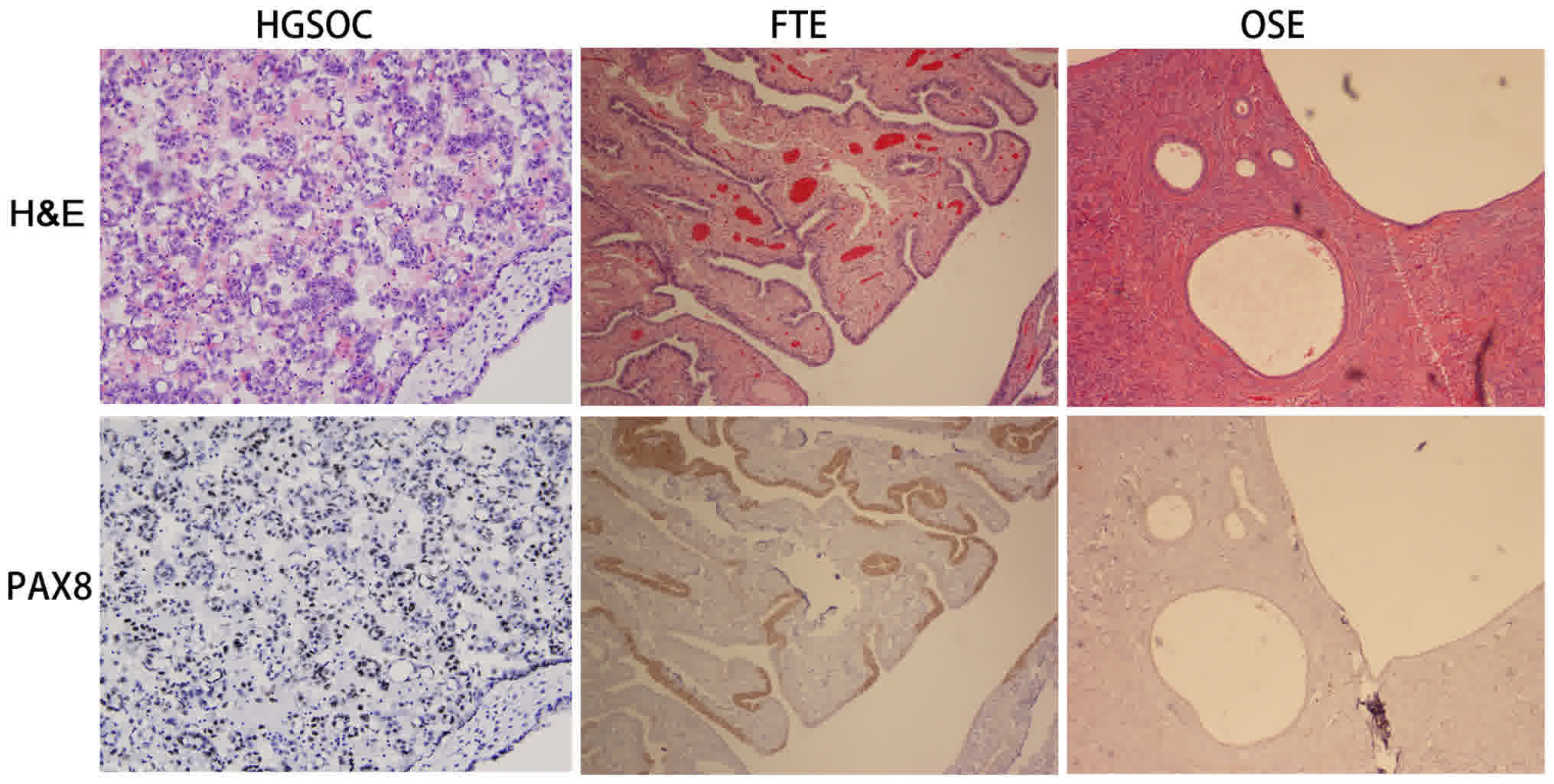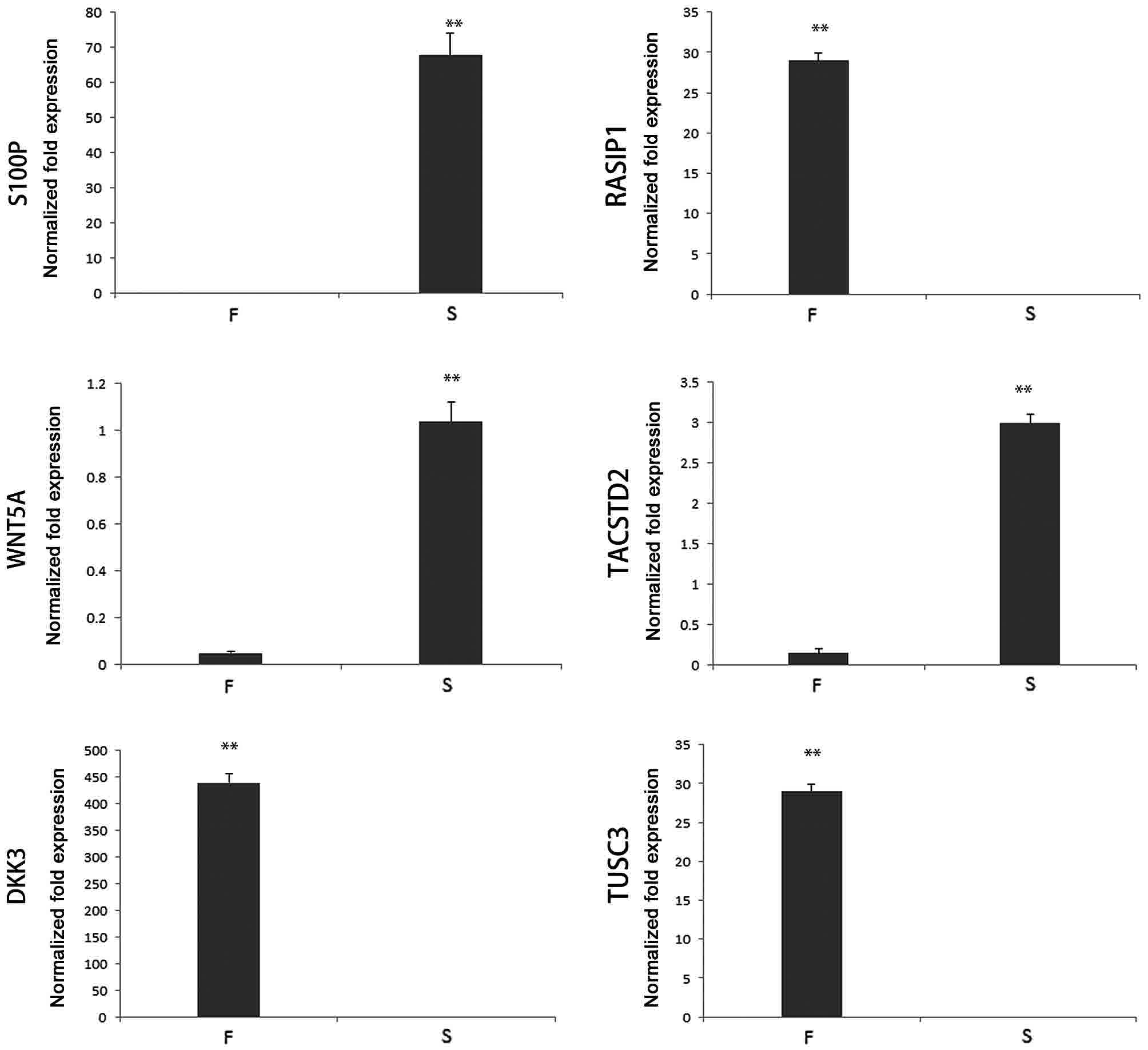|
1
|
Kujawa KA and Lisowska KM: Ovarian
cancer-from biology to clinic. Postepy Hig Med Dosw (Online).
69:1275–1290. 2015.(Article in Polish). View Article : Google Scholar : PubMed/NCBI
|
|
2
|
Siegel RL, Miller KD and Jemal A: Cancer
statistics, 2018. CA Cancer J Clin. 68:7–30. 2018. View Article : Google Scholar : PubMed/NCBI
|
|
3
|
Chen W, Zheng R, Baade PD, Zhang S, Zeng
H, Bray F, Jemal A, Yu XQ and He J: Cancer statistics in China,
2015. CA Cancer J Clin. 66:115–132. 2016. View Article : Google Scholar : PubMed/NCBI
|
|
4
|
Eng KH, Hanlon BM, Bradley WH and Szender
JB: Prognostic factors modifying the treatment-free interval in
recurrent ovarian cancer. Gynecol Oncol. 139:228–235. 2015.
View Article : Google Scholar : PubMed/NCBI
|
|
5
|
Ramalingam P: Morphologic,
immunophenotypic, and molecular features of epithelial ovarian
cancer. Oncology (Williston Park). 30:166–176. 2016.PubMed/NCBI
|
|
6
|
Meinhold-Heerlein I, Fotopoulou C, Harter
P, Kurzeder C, Mustea A, Wimberger P, Hauptmann S and Sehouli J:
The new WHO classification of ovarian, fallopian tube, and primary
peritoneal cancer and its clinical implications. Arch Gynecol
Obstet. 293:695–700. 2016. View Article : Google Scholar : PubMed/NCBI
|
|
7
|
Kurman RJ: Origin and molecular
pathogenesis of ovarian high-grade serous carcinoma. Ann Oncol. 24
Suppl 10:S16–S21. 2013. View Article : Google Scholar
|
|
8
|
Perets R and Drapkin R: It's totally
Tubular…Riding the new wave of ovarian cancer research. Cancer Res.
76:10–17. 2016. View Article : Google Scholar : PubMed/NCBI
|
|
9
|
Ning G, Bijron JG, Yamamoto Y, Wang X,
Howitt BE, Herfs M, Yang E, Hong Y, Cornille M, Wu L, et al: The
PAX2-null immunophenotype defines multiple lineages with common
expression signatures in benign and neoplastic oviductal
epithelium. J Pathol. 234:478–487. 2014. View Article : Google Scholar : PubMed/NCBI
|
|
10
|
Mehra K, Mehrad M, Ning G, Drapkin R,
McKeon FD, Xian W and Crum CP: STICS, SCOUTs and p53 signatures; a
new language for pelvic serous carcinogenesis. Front Biosci (Elite
Ed). 3:625–634. 2011.PubMed/NCBI
|
|
11
|
Xiang L, Zheng W and Kong B: Detection of
PAX8 and p53 is beneficial in recognizing metastatic carcinomas in
pelvic washings, especially in cases with suspicious cytology.
Gynecol Oncol. 127:595–600. 2012. View Article : Google Scholar : PubMed/NCBI
|
|
12
|
Livak KJ and Schmittgen TD: Analysis of
relative gene expression data using real-time quantitative PCR and
the 2 (-Dalta Dalta C(T)) method. Methods. 25:402–408. 2001.
View Article : Google Scholar : PubMed/NCBI
|
|
13
|
Fathalla MF: Incessant ovulation-a factor
in ovarian neoplasia? Lancet. 2:1631971. View Article : Google Scholar : PubMed/NCBI
|
|
14
|
Fraumeni JF Jr, Lloyd JW, Smith EM and
Wagoner JK: Cancer mortality among nuns: Role of marital status in
etiology of neoplastic disease in women. J Natl Cancer Inst.
42:455–468. 1969.PubMed/NCBI
|
|
15
|
Mhawech-Fauceglia P, Wang D, Samrao D,
Godoy H, Ough F, Liu S, Pejovic T and Lele S: Pair Box 8 (PAX8)
protein expression in high grade, late stage (stages III and IV)
ovarian serous carcinoma. Gynecol Oncol. 127:198–201. 2012.
View Article : Google Scholar : PubMed/NCBI
|
|
16
|
Medeiros F, Muto MG, Lee Y, Elvin JA,
Callahan MJ, Feltmate C, Garber JE, Cramer DW and Crum CP: The
tubal fimbria is a preferred site for early adenocarcinoma in women
with familial ovarian cancer syndrome. Am J Surg Pathol.
30:230–236. 2006. View Article : Google Scholar : PubMed/NCBI
|
|
17
|
Callahan MJ, Crum CP, Medeiros F,
Kindelberger DW, Elvin JA, Garber JE, Feltmate CM, Berkowitz RS and
Muto MG: Primary fallopian tube malignancies in BRCA-positive women
undergoing surgery for ovarian cancer risk reduction. J Clin Oncol.
25:3985–3990. 2007. View Article : Google Scholar : PubMed/NCBI
|
|
18
|
Seidman JD: Serous tubal intraepithelial
carcinoma localizes to the tubal-peritoneal junction: A pivotal
clue to the site of origin of extrauterine high-grade serous
carcinoma (ovarian cancer). Int J Gynecol Pathol. 34:112–120. 2015.
View Article : Google Scholar : PubMed/NCBI
|
|
19
|
Erickson BK, Conner MG and Landen CN Jr:
The role of the fallopian tube in the origin of ovarian cancer. Am
J Obstet Gynecol. 209:409–414. 2013. View Article : Google Scholar : PubMed/NCBI
|
|
20
|
Walker JL, Powell CB, Chen LM, Carter J,
Jump Bae VL, Parker LP, Borowsky ME and Gibb RK: Society of
gynecologic oncology recommendations for the prevention of ovarian
cancer. Cancer. 121:2108–2120. 2015. View Article : Google Scholar : PubMed/NCBI
|
|
21
|
Duska LR and Kohn EC: The new
classifications of ovarian, fallopian tube, and primary peritoneal
cancer and their clinical implications. Ann Oncol. 28 Suppl 8:2017.
View Article : Google Scholar : PubMed/NCBI
|
|
22
|
Roche Long KC, Abu-Rustum NR, Nourmoussavi
M and Zivanovic O: Risk-reducing salpingectomy: Let us be
opportunistic. Cancer. 123:1714–1720. 2017. View Article : Google Scholar : PubMed/NCBI
|
|
23
|
Wang X, Tian T, Li X, Zhao M, Lou Y, Qian
J, Liu Z, Chen H and Cui Z: High expression of S100P is associated
with unfavorable prognosis and tumor progression in patients with
epithelial ovarian cancer. Am J Cancer Res. 5:2409–2421.
2015.PubMed/NCBI
|
|
24
|
Surowiak P, Maciejczyk A, Materna V,
Drag-Zalesińska M, Wojnar A, Pudelko M, Kedzia W, Spaczyński M,
Dietel M, Zabel M and Lage H: Unfavourable prognostic significance
of S100P expression in ovarian cancers. Histopathology. 51:125–128.
2007. View Article : Google Scholar : PubMed/NCBI
|
|
25
|
Post A, Pannekoek WJ, Ross SH, Verlaan I,
Brouwer PM and Bos JL: Rasip1 mediates Rap1 regulation of Rho in
endothelial barrier function through ArhGAP29. Proc Natl Acad Sci
USA. 110:11427–11432. 2013. View Article : Google Scholar : PubMed/NCBI
|
|
26
|
Arabzadeh S, Hossein G and Zarnani AH:
Wnt5A exerts immunomodulatory activity in the human ovarian cancer
cell line SKOV-3. Cell Biol Int. 40:177–187. 2016. View Article : Google Scholar : PubMed/NCBI
|
|
27
|
Jannesari-Ladani F, Hossein G, Monhasery
N, Shahoei SH and Mood Izadi N: Wnt5a influences viability,
migration, adhesion, colony formation, E- and N-cadherin expression
of human ovarian cancer cell line SKOV-3. Folia Biol (Praha).
60:57–67. 2014.PubMed/NCBI
|
|
28
|
Shvartsur A and Bonavida B: Trop2 and its
overexpression in cancers: Regulation and clinical/therapeutic
implications. Genes Cancer. 6:84–105. 2015.PubMed/NCBI
|
|
29
|
Mohammadpour H, Pourfathollah AA, Zarif
Nikougoftar M and Khalili S: Key role of Dkk3 protein in inhibition
of cancer cell proliferation: An in silico identification. J Theor
Biol. 393:98–104. 2016. View Article : Google Scholar : PubMed/NCBI
|
|
30
|
Kratochvílová K, Horak P, Ešner M, Souček
K, Pils D, Anees M, Tomasich E, Dráfi F, Jurtíková V, Hampl A, et
al: Tumor suppressor candidate 3 (TUSC3) prevents the
epithelial-to-mesenchymal transition and inhibits tumor growth by
modulating the endoplasmic reticulum stress response in ovarian
cancer cells. Int J Cancer. 137:1330–1340. 2015. View Article : Google Scholar : PubMed/NCBI
|












